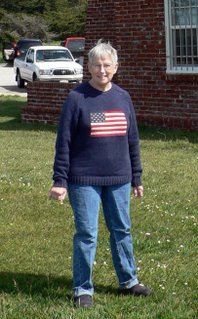Herbs are just plants, so they’re safe to take with my medicines, right?
Wrong—sometimes deadly wrong.
Thousands of Americans use herbs for various purposes—memory, energy, sleep, digestion, weight loss. They’re in every drug store, supermarket, and fitness magazine. They’re available without prescription, so most people consider them benign.
The truth is some drug/herb combinations are dangerous. The effect of the drug might be stronger, weaker, or eliminated altogether. Here are some examples:
If you’re taking Coumadin (Warfarin), a blood thinner, use of ginkgo, garlic, dong quai, and several other herbs may cause bleeding.
Taking St. John’s Wort with certain antidepressants may interfere with the action of Digoxin, taken to help the heart contract, or Theophylline, taken for breathing conditions.
Taking ginseng with Digoxin will make it difficult to measure blood levels of the Digoxin, causing problems for the physician in properly prescribing the drug. Digoxin is effective at certain levels and toxic at others.
Licorice, used for indigestion, interferes with Digoxin and with Spirinolactone, a drug for high blood pressure, making them less effective.
It is very important to tell your physician about everything you’re taking. That includes herbs, over-the-counter remedies, and medications ordered by other physicians. Your pharmacist is an excellent source of information about herb and medicine combinations, too. A good place for information on the web is found at http://www.mayoclinic.com/health/drug-information/DrugHerbIndex.
Saturday, June 30, 2007
Monday, June 4, 2007
June is Cancer from the Sun Month
 As a teenager living in Southern California (a long time ago), my favorite activity was going to the beach—any beach. I had hopes that all my freckles would blend into a beautiful tan. Never happened—but I had some unforgettable sunburns. Now I have some big regrets.
As a teenager living in Southern California (a long time ago), my favorite activity was going to the beach—any beach. I had hopes that all my freckles would blend into a beautiful tan. Never happened—but I had some unforgettable sunburns. Now I have some big regrets.Basically I have a one in three chance of developing skin cancer. All those sunburn episodes increase the risk. A light complexion is another factor. Young people who use tanning beds are more prone to develop skin cancer as well.
Skin cancer is a widespread problem—more than 1 million Americans are diagnosed with it every year and more than 20 die each year, mostly from melanoma.
The best treatment is prevention! A young child’s skin is especially sensitive. Babies need complete protection from direct sunlight; sunscreen should not be used on a baby younger than 6 months old.
Cream-type sunscreens are better for children to prevent drying of the skin. Usually not enough is applied. Although a sunscreen of SPF 15 may be the usual recommendation, a higher SPF may be more effective, even if you’re not using enough. Put it on before exposure to the sun—it takes a few minutes to start working. And check the expiration date on your sunscreen. It’s probably best to buy a new container every year. If you don’t like the cream, try a spray or gel. Your ears and the tops of your feet need a coating. And don’t forget your lips—lip balm with SPF 15 protection might prevent a skin cancer. Most experts advise re-applying sunscreen every couple of hours. Water-resistant sunscreen is necessary on the beach or in the water—sand and water reflect sunlight and intensify the burn.
Dress for protection with wide-brimmed hats, sunglasses, loose cotton clothing and shoes or sandals.
Some other pointers:
Exposure to the sun before 10 a.m. and after 4 p.m. is less likely to burn.
A teen who wants a beautiful tan might try one of the newer self-tanning lotions—they don’t turn your skin orange like they used to!
A cloudy day doesn’t provide protection—those rays get through.
Don’t think you’re safe if you’re dark complected or African-American—the sun can still do damage.
The Skin Cancer Foundation recommends a yearly skin exam by your doctor and a monthly self-exam—to learn how to do this, see http://www.skincancer.org/self_exam/spot_skin_cancer.php. Early diagnosis and treatment greatly reduce the risk of death.
Subscribe to:
Posts (Atom)
